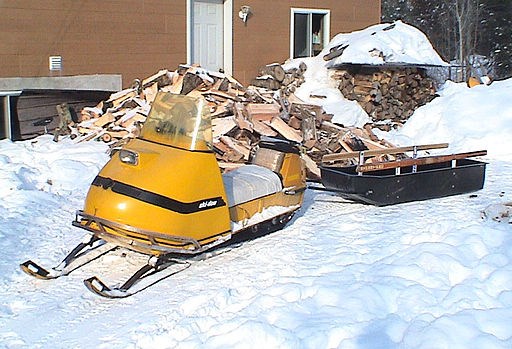This week's big business argle-bargle is the decision whether or not to bail out Bombardier.
Canada's largest aerospace manufacturer is in real trouble, and is looking to lay off as many as 7,000 people over the next two years.
But even as the politcos wrestle over what's best for the economy and taxpayer money, the humble little vehicles that got Bombardier off the ground still crawl along gamely, some of them more than a half century old. Half bus, half half-track, the Bombardier snowmobile is tougher than the company it founded, and might just be longer lived.
Joseph-Armand Bombardier was born in Valcourt, Que., into a large farming family. He was a precocious lad, interested in mechanics from a very young age. At 13, he built himself a clockwork toy locomotive from scratch; later he repaired a broken .22 rifle and converted it into a working toy cannon.
His somewhat bemused father, Alfred, had a great deal of trouble keeping his son from taking apart the family car all the time. So, he bought the boy a seized Model T engine, thinking the project would at least keep the Devil away from Joseph-Armand's idle hands. Some hope.
Working with his brother Leopold, Joseph-Armand created a propeller-powered snow machine running on a pair of sleds - think of an Everglades airboat, but with an early 20th century teenager's approach to safety standards. One boy steered, the other boy operated the repaired engine, and miraculously they both escaped with all limbs still attached. Their father ordered the infernal machine disassembled, but Joseph-Armand's first snow machine had already run.
At the age of 17, he quit college with his family's blessing (you have to expect this was forged through much argument), and set up a garage. There, he repaired everything from cars to bandsaws, building a reputation as being a mechanical genius.
At the same time, the winter months are lonely in eastern Quebec. The government didn't clear the roads, which were often so deep in snow that the widely spaced farmsteads were frequently cut off from their neighbours. Bombardier puzzled over a solution, working late into the night. It took him a decade, eating into his savings, causing his friends and neighbours to shake their heads at the mad inventor who is so good with wheels and engines and clockwork things.
In the winter of 1934, Joseph-Armand's young son was struck by peritonitis. The snow was too deep to be traversed, and the boy died, his father unable to do anything. Imagine the pain, of wrestling with an invention that might have saved your child's life, of knowing so much about mechanical things, but not enough about the frailties of the human body.
The next year, he invented the sprocket and wheel combination that worked so well on the snow. He applied for patent, and received his patent in June of 1937. Instead of selling the patent to a larger manufacturer, he started building snow machines, and the Bombardier B7 was born.
The first B7s were capable of holding seven people. Each one had a simple, tapered shape, and its froglike headlamps appeared to give it a personality. If you've ever seen the Swedish kids character Moomin, they look a little like that.
Improvements to the wheels and tracks followed quickly, and the vehicle became popular with doctors, veterinarians, and as a school transport. The advent of the war brought an opportunity to expand, and Bombardier created numerous tracked machines capable of fighting in all conditions. In the postwar period, a much larger school bus was made, opening up education to snowbound areas. A tractor capable of crossing muskeg made oil and gas exploration possible as far away as Scotland.
Eventually, the iconic Ski-Doo made its appearance. It sold for $900 and opened up Canada's north for all kinds of outdoor activities.
But it's the early "Snow Bugs" that are really interesting. Up in northern Saskatchewan, home to the polar bear, these early Bombardiers still roam the snows, some of them from the 1950s. These are workhorses, not relics, but thanks to simple construction that can be fixed by anyone handy with a wrench and a welder, they keep soldiering along. Many use slightly more modern V-8 engines, but they're still old-fashioned machines, appealing to those with a certain self-reliance.
You have to think they're the sort of machines Joseph-Armand would be happiest to see his name attached to, not a beleaguered aerospace company. Regardless of what happens in the air, the Bombardiers on the ground will still make their way over the snows, cutting a path which one man dreamed.
Brendan McAleer is a freelance writer and automotive enthusiast. If you have a suggestion for a column, or would be interested in having your car club featured, please contact him at [email protected]. Follow Brendan on Twitter: @brendan_ mcaleer.



